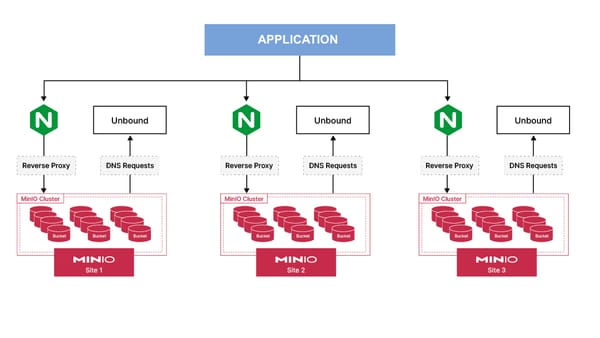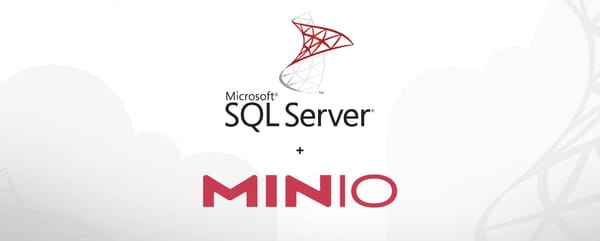
This article unveils the synergy between MinIO and GitOps, utilizing self-hosted GitHub Actions to redefine CI/CD workflows. It emphasizes streamlined data management, security, and the efficiency of deploying scalable software.
Read more

In this post we’ll show you how to configure MinIO Operator with KES (Keys Encryption System) and Vault in a cloud native way in Kubernetes.
Read more

Unstructured-IO, MinIO, & Weaviate redefine ETL, turning unstructured web data into actionable insights. This collaboration enhances data management, offering a robust solution for dynamic data transformation and analysis, marking a leap in how we process and leverage web-generated content.
Read more

We will focus on utilizing the Kubernetes CSR resource specifically for creating a certificate that can be used by MinIO. You will have a clear understanding of how to generate a certificate using CSR, store it securely in a Kubernetes Secret.
Read more

Explore modern data architecture with Iceberg, Tabular, and MinIO. Learn to seamlessly integrate structured and unstructured data, optimize AI/ML workloads, and build a high-performance, cloud-native data lake.
Read more

Explore Langchain’s LLM Tool-Use and leverage Langgraph for monitoring MinIO’s S3 Object Store. This guide walks you through developing custom conversational AI agents and creating powerful OpenAI LLM chains for efficient data management and enhanced application functionality.
Read more

In this tutorial, we’ll show you how to configure Dremio to connect to MinIO, which uses self-signed TLS certificates. This is one of the more common use cases, and we’ve had customers from SUBNET ask time and time again how they can configure something like this.
Read more

How you ever wondered how object storage creates its folder structure mimicking a POSIX style hierarchy but something that is actually built for speed and efficiency? Today in this post you will find out what actually makes the internal structure you see visually in your MInIO buckets.
Read more

Explore the fusion of GitOps, MinIO, Weaviate, and Python in AI development for unparalleled automation and innovation. This combination offers a solid foundation for creating scalable, efficient, and automated AI solutions, propelling projects from concept to reality with ease.
Read more

This tutorial guides you through constructing robust data pipelines on the edge, ensuring flexibility and scalability. Learn to create, populate, and transform datasets seamlessly while prioritizing data privacy. Master the art of automation with MinIO's Python SDK.
Read more

With all these different types of replication types floating around one has to wonder which replication strategy to use where? Today we’ll demystify these different replication strategies to see which one should be used in which scenario.
Read more

Explore integrating MinIO with Weaviate using Docker Compose for AI-enhanced data management. Learn to back up Weaviate to MinIO S3 buckets, ensuring data integrity and scalability with practical Docker and Python examples. Streamline your AI-driven search and analysis with this robust setup.
Read more

Learn how to run Python stored procedures on SQL Server 2022.
Read more

Tl;dr:
In this post, we will use MinIO Bucket Notifications and Apache Tika, for document text extraction, which is at the heart of critical downstream tasks like Large Language Model (LLM) training and Retrieval Augmented Generation (RAG).
The Premise
Let’s say that I want to construct a dataset of text that I can then use to fine-tune an
Read more

A chain is as strong as its weakest link - and your AI/ML infrastructure is only as fast as your slowest component. If you train machine learning models with GPUs, then your weak link may be your storage solution. The result is what I call the “Starving GPU Problem.” The Starving GPU problem occurs when your network or your
Read more

I suspect some folks will accuse me of clickbait titling. Others will say, that’s not really a reach - most folks will fail in their initial AI attempts but it doesn’t matter and the learnings are worth it. On some level both are right - but I think WHY enterprises will fail is worth exploration and may allow
Read more

Explore the synergy of MinIO, Langchain, and OpenAI in enhancing data storage and processing. This article illustrates MinIO’s integration for efficient document summarization using Langchain and OpenAI’s GPT, revolutionizing AI and ML data handling.
Read more

MinIO makes a powerful primary TileDB backend because both are built for performance and scale.
Read more

Explore the essential role of Data Engineers in unleashing the true power of AI! Data Engineers have a critical foundation in cleaning and structuring raw data for ML success. Learn why their expertise in data infrastructure, feature engineering, and pipeline optimization is indispensable.
Read more

Much has been said lately about the wonders of Large Language Models (LLMs). Most of these accolades are deserved. Ask ChatGPT to describe the General Theory of Relativity and you will get a very good (and accurate) answer. However, at the end of the day ChatGPT is still a computer program (as are all other LLMs) that is blindly executing
Read more


























